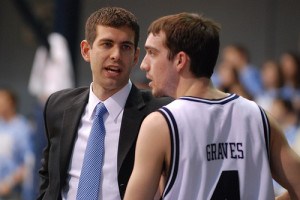Thinking about Player Performance
Player Performance at first glance to the outsider is about statistics. Questions commonly asked by the media, parents and players alike often sound like “has a players fulfilled their potential statistically throughout a game?” But there is a lot more to player performance then just how many points a player has achieved or rebounds secured. As a coach, if this is where your measuring of player performance starts and finishes then you probably need to review how you are managing your players to provide a richer playing experience and development opportunities.

When looking into player performance the most significant point to consider is context. Not all players are created equal, and not all players will have the same role within a team. So why would you use the same standards and measurements to help value player performance amongst all positions. You simply would not, or run the risk of motivating some players and hindering the output of others. With this in mind, a coach should therefore be aware that on the surface to people outside the team that performance will often not be the same as what is agreed between a coach and individual. For example, when discussing goals with a junior player a simple measure of player performance might be that the player uses the appropriate hand when laying the ball up on each side of the floor.
Goal Setting is the Key
Speaking with players, they will often measure performance very similar to those around them and this is more often than not related to the amount of points they scored. This type of mentality in junior and senior players’ alike needs to be aggressively combated by a coach or the wrong type of culture can rapidly develop around an internally focused and selfish outlook.
The simplest way to deal with this is to establish clear and specific goals that are the basis for measuring player performance. These must be developed for each game, with every player to have the best effect. Nevertheless, setting the goals is only the first step, these goals need to be mentioned in pre-game talks, and halftime reviews. Then finally for the basis of feedback about player performance post match.
Every Player Needs Role
Another philosophy worth investing in is allocating all players some specific tasks or responsibilities defined as a role within the team. This does not mean a team as a number of people sharing the captaincy, but rather player’s goals and strengths are attached to team specific roles within the strategies imbedded in the overall style of play. These roles should be individualised so players can take pride in them and achieve personal satisfaction when they fulfil what is needed of them in the team context.
Player performance should be monitored with a great amount of time and energy put into its development of a shared understanding between a player and their coach. If the communication level is good and a clear vision is shared then the results can be more than expected with some simple strategies.
Related articles







